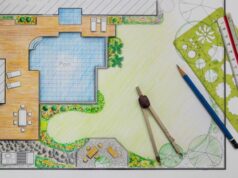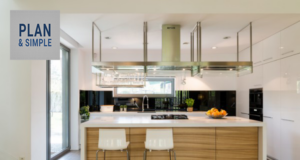
Darker colours absorb heat – and some materials collect and store warmth while others reflect and dissipate it. Find out how to choose the right colours and materials for the best passive heating and cooling.

Image courtesy of Monier.
Roof colour, materials and energy efficiency
By installing a roof that has been painted a particular colour, or constructed a certain way using different types of materials, you can improve the energy efficiency of your home. Some examples of roof colour and material affecting energy efficiency are so-called ‘cool roofs’ – roofs installed with cladding that has a high thermal mass, and ‘green roofs’, which incorporate areas to grow plants.
Cool roof
A cool roof is a roof that has been painted or clad with materials that both reflect and release solar energy. While some roof cladding materials will absorb a lot of solar energy (i.e. heat from the sun), a house with a cool roof absorbs only very small amounts of heat. White vinyl is widely regarded as one of the best materials for cool roofs, however there are a variety of solar reflective paints and coatings to choose from.
Studies have shown that on average, the temperature of a roof with a black surface can be reduced by 15°C by having it retrofitted with a cool roof surface. Other studies suggest that installing a cool roof can even reduce energy consumption by between 10% and 50% – depending on how heavily you run your air conditioners, of course.
Cool roofs are best suited to tropical and subtropical climates, where they replace bulk insulation.
Thermal mass
Some roof materials have what is called a high thermal mass. This means these materials are slow to absorb and release thermal energy. In climates with hot days and cool nights, a roof with a high thermal mass will absorb heat during the day and then release it back into your home at night. This helps to maintain a constant, comfortable temperature inside your home.
Green roof
Another option is the ‘green roof’. This type of roof is converted to a space for growing plants, which helps to absorb solar energy as well as insulating the inside of your home. The green roof is made up of layers – at the base there will be an insulation layer, then a waterproof membrane, then a drainage layer, followed by the soil, then a mat to prevent the soil from blowing away and finally, the plants themselves. Depending on the depth of the soil, the plants can be anything from moss and grass, to trees and shrubs.
Green roofs can be constructed to suit most climates. Due to the considerable weight they add to the roof, it’s important that they’re accounted for from the design stages to ensure that the roof and walls have the necessary load bearing capacity.
Urban heat islands
Cool roofs and green roofs are particularly appropriate for urban environments. When these roofs are installed, solar energy is being reflected rather than absorbed. In densely built urban ares, roofs designed to prevent heat absorbption also help to reduce what’s known as the ‘urban heat island effect’. This effect occurs in city areas where there are lots of surfaces that absorb and retain heat. This significantly increases the ambient temperature in the area.





